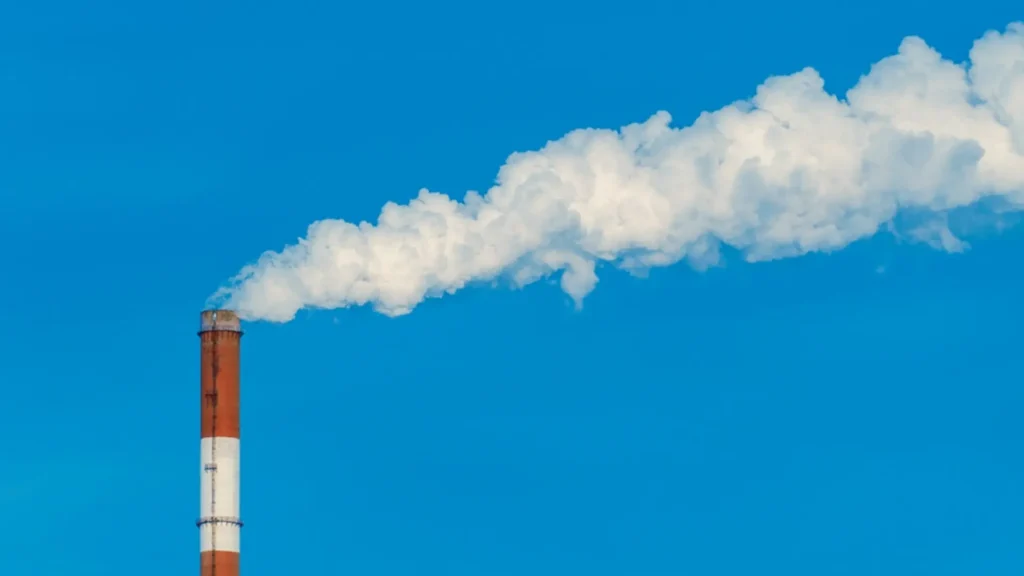Waste Tire Oil: A Cure or Curse?
Waste tire oil (WTO) is a byproduct of tire pyrolysis, breaking down used tires into fuel oil, carbon black, and steel wire. Waste tire oil has attracted significant attention recently because of its potential as an alternative fuel source and its contribution to the circular economy. However, there are concerns about its environmental impact and the oil quality. This article examines the techno-economic, scientific, social, and policy issues surrounding waste tire oil, exploring its potential as a cure or curse for the world’s energy needs and environmental challenges.
What is the Fuel from Waste Tire?
The fuel produced from waste tires is called WTO, also known as pyrolysis oil or tire-derived fuel (TDF). It is a dark, viscous liquid produced by heating used tires without oxygen. The process breaks down the complex hydrocarbons in the tires into simpler compounds, producing a fuel that can be used in various applications.
What is the Use of Waste Tire Oil?
Waste tire oil can be used as fuel in a variety of applications. For example, it can be used as an individual fuel, blended with other fuels such as diesel or gasoline, or further refined into higher-value products such as chemicals or lubricants. WTO has properties similar to diesel fuel, making it a potential alternative to diesel in certain applications.
However, it is important to note that the oil quality can vary depending on the feedstock type and the pyrolysis process. As a result, the use of waste tire oil as a fuel may need specific equipment or engine modifications to ensure optimal performance and reduce emissions.

How is Oil Made from Waste Tires?
The process of making oil from waste tires is called tire pyrolysis. Here is a general overview of the process:
- The tires are collected and sorted, and contaminants, including metal, dirt, or fiber, are removed.
- The tires are shredded into smaller pieces to facilitate the heating process.
- The shredded tires are then placed in a reactor vessel and heated without oxygen.
- Temperature is typically between 300-500°C, and heating can take several hours.
- As the tires heat up, they release gas, oil, and carbon black.
- The gases are typically captured and used to fuel the heating process, while the oil and carbon black are collected.
- The oil collected during pyrolysis is typically a dark, viscous liquid that requires further refining before it can be used as a fuel or feedstock.
- Oil refining may involve filtration, distillation, or other refining processes to remove impurities and improve the quality of the oil.
What are the Scientific and Technological Limitations of Waste Tire Oil?
One major challenge is the quality of the oil produced. Waste tire oil is often contaminated with sulfur, nitrogen, and other impurities, contributing to air pollution and damaging engines. There are also concerns about the toxicity of the oil that may contain harmful chemicals and heavy metals.
Several studies have shown that WTO can negatively affect human health and the environment. Another challenge is the scalability of the technology. While pyrolysis has the potential to produce large amounts of oil, it requires a significant amount of feedstock and energy. The ability to scale up production while maintaining the quality and efficiency of the process is a significant challenge that needs to be overcome for WTO to be a viable alternative to traditional fossil fuels.
There are also concerns about tire pyrolysis’s environmental impact, particularly in emissions and waste disposal. The carbon black and steel wire produced during the process are often difficult to recycle or dispose of, leading to potential environmental and health risks. The other scientific issue associated with the production of WTO is using different feedstock.
While waste tires are the most common feedstock used for producing waste tire oil, other materials such as plastics, biomass, and rubber waste can also be used. However, using different feedstock can cause variations in the quality and properties of the oil produced. This can make establishing a reliable customer base difficult and impact the performance and emissions of engines that use WTO as fuel.
Despite the challenges associated with waste tire oil, there are also several potential benefits. One advantage of waste tire oil is its lower carbon footprint than traditional fossil fuels. While the production of WTO produces emissions, it has been estimated that it has a lower carbon intensity than crude oil or natural gas.
In addition, the use of WTO can help reduce the volume of waste tires in landfills, promoting a circular economy. Another potential benefit of WTO is its versatility as a fuel. WTO can be used as a standalone fuel, blended with other fuels, or refined into higher-value products such as chemicals or lubricants. This versatility can make WTO a more attractive alternative to traditional fossil fuels, particularly as the demand for renewable energy grows.

What are the Economic Advantages and Limitations of WTO?
The production and use of waste tire oil can have significant economic implications, both positive and negative. One potential advantage of WTO is its lower cost than traditional fossil fuels. While the initial capital costs of tire pyrolysis plants can be high, the lower operating costs and the ability to use waste tires as feedstock can cause lower overall costs. This can make WTO a more attractive option for energy production, particularly in countries with limited resources and high energy demand.
However, potential economic challenges are also linked to the production and use of WTO. One concern is the lack of incentives for producing and using WTO, particularly compared to traditional fossil fuels. Without government subsidies or tax credits, it may be difficult for WTO producers to compete in the market. In addition, the oil quality can vary, making it difficult to establish a reliable customer base.
The volatility of the market is another potential economic challenge associated with WTO. For example, the price of crude oil and other fossil fuels can fluctuate significantly, impacting the demand and price of WTO. In addition, the lack of established standards for the production and use of WTO can cause variability in the oil quality that can impact its price and demand.
The potential solution to the economic challenges associated with WTO is the establishment of policies and incentives that promote the use of renewable fuels. By providing subsidies or tax credits for the production and use of WTO, governments can help level the playing field and make WTO a more attractive option for energy production.
What are the Social Implications of WTO?
The production and use of WTO can also have social implications. One potential benefit of WTO is its ability to create jobs and stimulate economic growth, particularly in regions with high unemployment rates. For example, establishing tire pyrolysis plants can create new jobs in plant construction, operation, and maintenance. In addition, the production of WTO can help promote the circular economy and reduce waste. However, potential social challenges are also associated with the production and use of WTO.
One concern is the health and safety risks linked with the production of WTO. For example, tire pyrolysis involves heating tires to high temperatures that can produce toxic fumes and byproducts. Without proper safety measures and regulations, the production of waste tire oil can pose a risk to workers and nearby communities.
One potential social challenge with WTO is the perception of the technology. While the production of WTO has the potential to create jobs and stimulate economic growth, it is also seen by some as a less desirable option than traditional fossil fuels or other renewable energy sources. This perception can impact the demand and price of WTO and the willingness of investors and governments to support its production and use.
Another social issue associated with WTO is the lack of public awareness and education. Numerous people are unfamiliar with the concept of tire pyrolysis or the potential of WTO as a renewable fuel. By promoting greater public awareness and education, governments and organizations can help build support for the production and use of WTO and promote the benefits of a circular economy.
What are the Environmental Constraints with WTO?
The environmental impact of waste tire oil is a significant concern, particularly emissions and waste disposal. While the production of WTO can help reduce the number of waste tires in landfills, it can also produce emissions that contribute to air pollution and climate change. The emissions produced during tire pyrolysis can contain harmful pollutants, such as carbon monoxide, nitrogen oxides, and sulfur dioxide. In addition, the carbon black and steel wire produced during the process can be difficult to recycle or dispose of, leading to potential environmental and health risks.
A potential solution to the environmental issues associated with WTO is using advanced technologies, such as carbon capture and utilization. Carbon capture technology can help capture the emissions produced during the production of WTO that can then be stored or used for other purposes. In addition, developing new technologies for the recycling or disposal of the carbon black and steel wire produced during the process could help reduce the environmental impact of WTO.
Life cycle assessment (LCA) can be a potential solution to the environmental issues associated with WTO, as it comprehensively analyzes the environmental impacts of producing and using a product or technology from the cradle to the grave. By conducting LCA of WTO, researchers and policymakers can better understand the environmental impacts of the technology and identify areas for improvement.

What are the Policy Concerns with Waste tire oil?
Using WTO as a fuel has been promoted to reduce dependence on fossil fuels and promote the circular economy. However, several policy issues must be addressed to realize the potential of WTO. One key issue is the lack of regulatory frameworks for producing and using WTO. For example, while there are standards for the quality of diesel and gasoline, there are no standards for WTO that can lead to variability in the oil’s quality produced. There are also concerns about the safety and health risks associated with the production of WTO, particularly in developing countries where regulations may be lax or nonexistent.
The lack of incentives for producing and using WTO is another policy issue. While some countries have implemented tax credits or subsidies for renewable fuels, there are no such incentives for WTO. This can make it difficult for producers to compete with traditional fossil fuels that often receive significant subsidies. In order to realize the potential of WTO, several policy issues need to be addressed.
One key issue is more research and development (R&D) in tire pyrolysis. While the process has been around for several decades, there is still much to learn about optimizing it for maximum efficiency and minimal environmental impact. In addition, research into new technologies and feedstocks could also help address some of the scalability and environmental issues associated with the production of waste tire oil.
The need for greater international cooperation and coordination is another policy issue. Waste tire oil is produced and used worldwide, but few international standards or regulations govern its production and use. Greater collaboration could help promote best practices and ensure that the oil produced meets certain quality and safety standards.

Conclusions
Waste tire oil (WTO) can be valuable in transitioning to a more sustainable development, particularly energy future. However, significant scientific, economic, social, and environmental challenges must be addressed to realize its full potential. Nevertheless, by investing in research and development, establishing regulatory frameworks, promoting public awareness and education, and promoting international cooperation, waste tire oil can become a viable alternative to traditional fossil fuels and a valuable resource in the fight against climate change. Thus, WTO could help reduce the world’s dependence on traditional fossil fuels, promote a circular economy, and contribute to a cleaner environment.
Nevertheless, it is important to cautiously approach the production and use of WTO and ensure that it is done responsibly and sustainably. Moreover, with the right policies and incentives, waste tire oil could become a valuable resource in the quest for sustainable development. For example, regulatory frameworks must be developed to ensure the quality and safety of the oil produced, and incentives must be inserted to encourage its production and use.
To Cite this article:
‘A.S. Nizami. Waste Tire Oil: A Cure or Curse?. 2023. Publication & Data. Green Flagship.’

